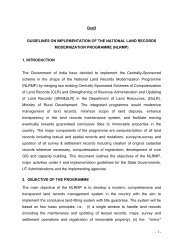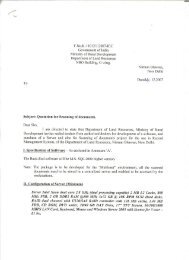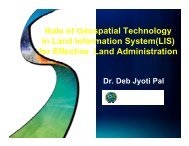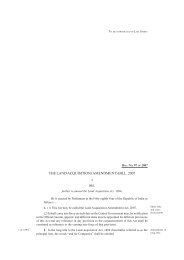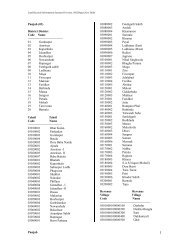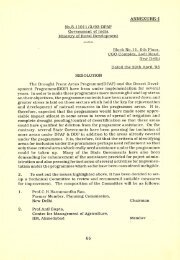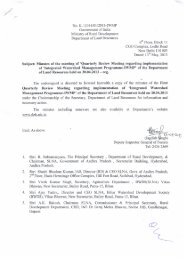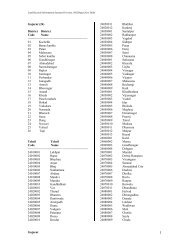Uttarakhand - Department of Land Resources
Uttarakhand - Department of Land Resources
Uttarakhand - Department of Land Resources
Create successful ePaper yourself
Turn your PDF publications into a flip-book with our unique Google optimized e-Paper software.
UTTARAKHAND STATE<br />
PERSPECTIVE AND STRATEGIC PLAN, 2009-2027<br />
EXECUTIVE SUMMARY<br />
<strong>Uttarakhand</strong> is located between 28 o 43' – 31 o 27' N latitudes and 77 o 34' – 81 o 02' E longitudes. The river<br />
Tons separates the state from Himachal Pradesh in the north-west, whereas the river Kali separates it from<br />
Nepal in the east. The greater Himalaya is the northern boundary <strong>of</strong> the state and is also the international<br />
border with China (Tibet). Foot-hills in the south are bound by Uttar Pradesh. The region, being situated<br />
centrally in the long sweep <strong>of</strong> the Himalaya, forms a transitional zone between the per-humid eastern and the<br />
dry to sub-humid western Himalaya. <strong>Uttarakhand</strong> became the 27th state <strong>of</strong> the Republic <strong>of</strong> India on 9<br />
November 2000.<br />
The population <strong>of</strong> the state primarily depends on agriculture for livelihood; about 70% <strong>of</strong> the population is<br />
engaged in agriculture. Out <strong>of</strong> total reported area, only 14.02% is under cultivation. More than 55.0% <strong>of</strong> the<br />
cultivated land in the State is rainfed. The cropping intensity is 160.6%. The landholdings are small and<br />
scattered. The average land holding is around 0.68 ha (that too is divided into many patches) in the hills and<br />
1.77 ha in the plains.<br />
About 70% <strong>of</strong> hills population is engaged in agriculture. There is hardly any other major source <strong>of</strong> livelihood<br />
deriving from the secondary or tertiary sectors. These sectors are very poorly developed primarily because <strong>of</strong><br />
inaccessibility and vulnerability <strong>of</strong> mountain regions. Although almost 70% <strong>of</strong> the population is dependent <strong>of</strong><br />
the primary sectors, the contribution <strong>of</strong> this sector <strong>of</strong> the GDP/NDDP is only 37.5. As a result, it does not<br />
provide sufficient income levels to the people. This subsistence nature, which leads to low incomes and<br />
unstable incomes, which in turn lead to a sizeable out-migration <strong>of</strong> male members that leads to only women<br />
headed families behind, and the role <strong>of</strong> women in the household economy becomes more important.<br />
After attaining statehood in 2000, the economic progress <strong>of</strong> <strong>Uttarakhand</strong> has been rapid, with its economic<br />
growth rate increasing from just over 3% per annum to 11% per annum. However, this rapid growth has been<br />
accompanied by adverse impacts on the local ecology, thus making the incorporation <strong>of</strong> sustainable<br />
development practices into the State’s overall development strategy an imperative.<br />
Water, agriculture, forestry and energy, among other issues, are central to the State’s inclusive strategy for<br />
future growth. Most <strong>of</strong> the people <strong>of</strong> this state are dependent on their natural environment, with over three-





